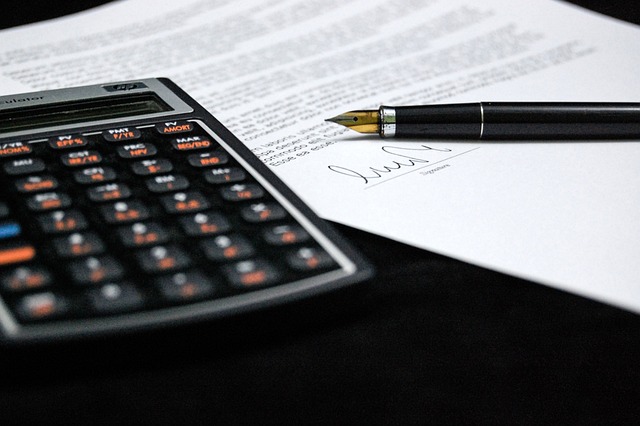Understanding lease terms explained in student rental agreements is crucial for a positive living experience. These agreements cover duration, rent payments, security deposits, maintenance, pet policies, subletting, and eviction procedures. By familiarizing themselves with these key clauses, students can make informed decisions, ensure their rights, and maintain a harmonious tenancy. A well-structured lease protects both tenants and landlords, outlining responsibilities for repairs, security deposits, rent increases, and termination notices. Reviewing the contract for common terms and negotiating when necessary is essential. Effective communication and guidance from legal services help resolve disputes fairly.
As a student moving into a new place, navigating your first rental agreement can be daunting. This comprehensive guide is designed to demystify student rental agreements and empower you with knowledge. We’ll break down essential lease terms, common clauses, and your rights as a tenant. By the end, you’ll be equipped to review, negotiate, and even resolve disputes with confidence. Understanding these key aspects will ensure a smooth living experience while protecting your interests as a student tenant.
- What is a Rental Agreement?
- Key Lease Terms Every Student Should Know
- Common Lease Clauses and Their Meanings
- Rights and Responsibilities as a Tenant
- How to Review and Negotiate Your Lease
- Resolving Disputes: Understanding Your Options
What is a Rental Agreement?

A Rental Agreement, often referred to as a lease, is a legal contract between a landlord (property owner) and a tenant (renter), setting out the terms and conditions for living in a rental property. It’s not just a piece of paper; it’s a roadmap that guides both parties through the duration of the tenancy, ensuring rights and responsibilities are clearly defined. For students looking to rent accommodation, understanding this lease is crucial.
This agreement outlines various key elements like the length of stay (start and end dates), monthly rent amount, payment methods, deposit requirements, maintenance obligations, rules regarding pets or subletting, and what happens if either party breaches the contract. Each clause in the student rental agreements is designed to protect both landlord and tenant, ensuring a harmonious living experience. By familiarizing themselves with these lease terms explained, students can make informed decisions and navigate their rental journey with confidence.
Key Lease Terms Every Student Should Know

When it comes to student rental agreements, knowing the key lease terms is essential for ensuring a smooth living experience and avoiding potential pitfalls. Familiarize yourself with these fundamental concepts to understand your rights and obligations as a tenant. Terms like ‘lease duration’ define the time you’ll be committed to the property, while ‘rent amount and payment schedule’ outline financial obligations.
‘Lease renewal options’ inform you of possibilities for extending your stay, and ‘maintenance responsibilities’ clarify who is tasked with fixing various issues within the unit or common areas. Additionally, ‘subletting rules’ are important to grasp if you plan to temporarily give up your lease, as these clauses detail restrictions and procedures for finding a new tenant. Understanding these lease terms empowers students to make informed decisions when signing rental agreements.
Common Lease Clauses and Their Meanings

When perusing potential student rental agreements, you’ll encounter various lease clauses that outline the rights and responsibilities of both tenants and landlords. Understanding these terms is paramount to making an informed decision about your living situation. Common lease clauses include provisions related to rent amount and due date, property maintenance and repairs, security deposits, pet policies, subletting restrictions, and eviction procedures.
Each clause serves a specific purpose in protecting the interests of both parties. For instance, the rent specification clearly outlines financial obligations while maintenance and repair clauses detail the responsibilities for keeping the living space in habitable condition. Security deposits act as a safety net for landlords while subletting restrictions safeguard tenants’ rights to temporarily vacate without penalty. Familiarizing yourself with these lease terms explained in your student rental agreements empowers you to navigate your housing situation confidently and ensure a fair and legally sound arrangement.
Rights and Responsibilities as a Tenant

As a tenant, understanding your rights and responsibilities is key when navigating student rental agreements. A well-drafted lease should clearly outline these aspects, ensuring students are protected and informed. Knowing your rights allows you to hold landlords accountable for their duties, such as maintaining safe living conditions, providing essential services, and respecting privacy. For instance, many leases include clauses on repair and maintenance, security deposits, and notice periods for rent increases or termination.
Responsibilities also play a significant role in the tenant-landlord relationship. Tenants are generally expected to pay rent on time, maintain the property to a reasonable standard, and inform the landlord of any necessary repairs. Additionally, students should be aware of lease terms regarding subletting, pet policies, and noise restrictions, especially in shared living spaces. Familiarizing oneself with these rental contract terms is crucial for a harmonious tenancy and can help avoid potential conflicts or misunderstandings later on.
How to Review and Negotiate Your Lease

When reviewing your student rental agreement, pay close attention to each and every clause. Leases often include a variety of terms that might seem confusing at first, but it’s essential to understand what they mean. Look for key lease clauses students frequently encounter, such as rent amount and due date, length of stay, pet policies, maintenance responsibilities, subletting rules, and termination procedures. Understanding these rental contract terms is crucial as they define your rights and obligations as a tenant.
Negotiation can be an effective strategy if you feel certain aspects of the lease are unfair or don’t work for your needs. Landlords are often open to discussions, especially with students who are new to renting. Clearly communicate your concerns and suggest alternative arrangements if possible. For instance, you might propose a different rent start date or negotiate terms regarding utility bills. Keep in mind that while you can try to negotiate certain points, some lease clauses are non-negotiable, so be prepared to accept them as is.
Resolving Disputes: Understanding Your Options

When it comes to resolving disputes under a student rental agreement, knowing your options is crucial. If disagreements arise between you and your landlord regarding lease terms explained, such as rent amount, maintenance responsibilities, or subletting rules, there are several steps you can take. Start by reviewing the specific clauses in your rental contract terms related to dispute resolution. Many agreements include provisions for mediation or arbitration, which offer alternative methods to court-ordered resolutions.
Engaging with your landlord or property manager early on is often the best approach. Open communication can prevent small issues from escalating. If negotiations fail, consider seeking advice from a student legal service or tenant advocacy group. They can guide you through understanding lease clauses students and help navigate the process of formal dispute resolution procedures outlined in your contract. Remember, being informed about your rights and responsibilities is key to ensuring fair treatment as a student tenant.






